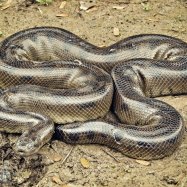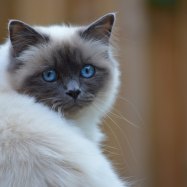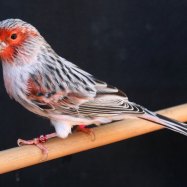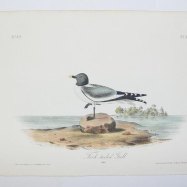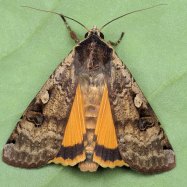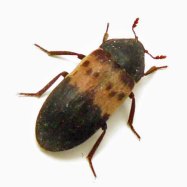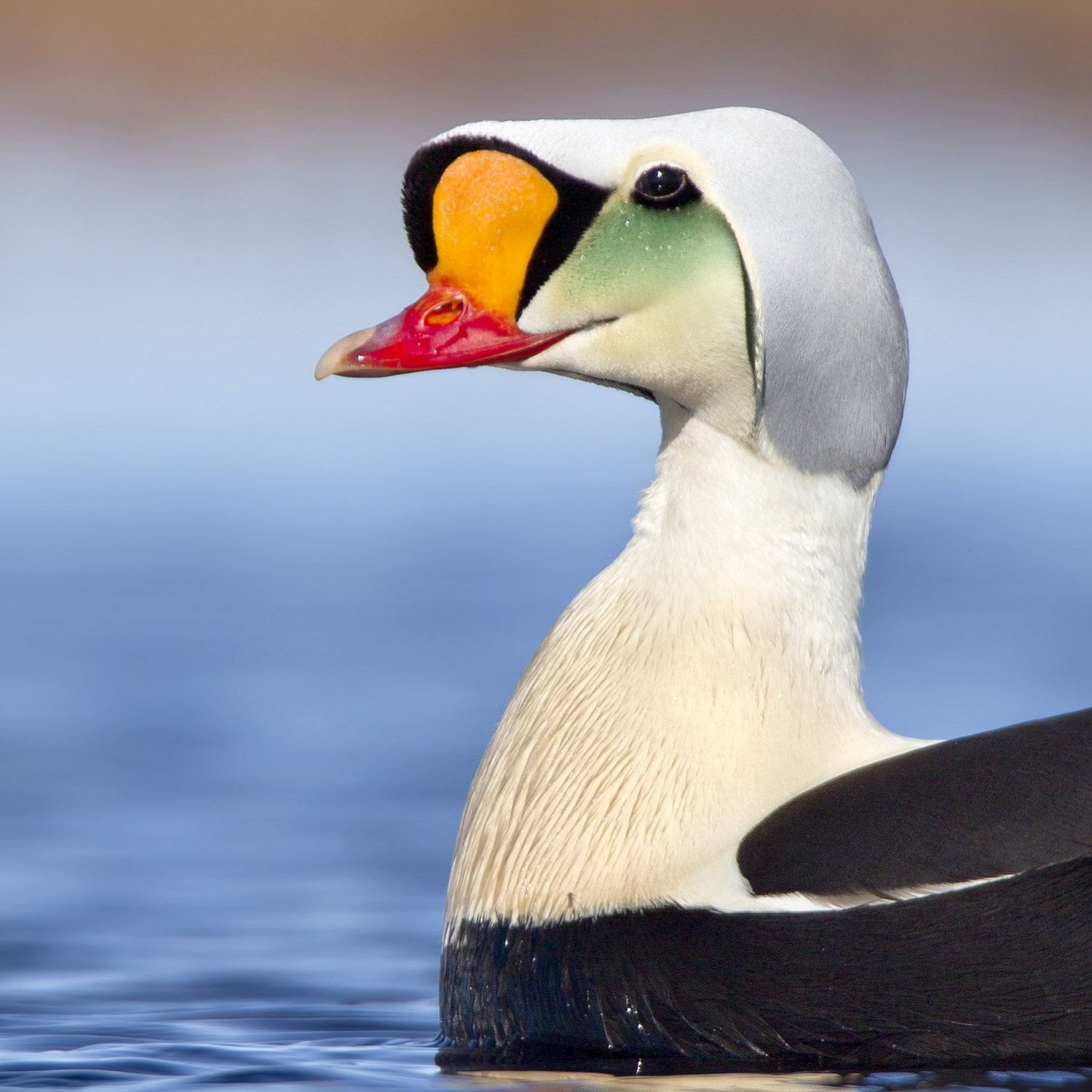
King Eider
45-55 centimeters
The King Eider is a stunning medium-sized duck found in the Northern Hemisphere. With a stocky body and round head, these birds measure between 45-55 centimeters in length. Belonging to the Anatidae family, they are commonly spotted in coastal areas and have striking plumage. Keep an eye out for these regal waterfowls on your next outdoor adventure! #KingEider #Anatidae #waterfowl
Animal Details Summary:
Common Name: King Eider
Kingdom: Animalia
Habitat: Arctic and Subarctic regions
Discovering the Majestic King Eider: A Regal Duck of the Arctic
The animal kingdom is full of diverse and fascinating creatures, each with its own unique characteristics and behaviors. From the gentle giants of the ocean to the nimble creatures of the rainforest, there is always something new to discover. In this article, we will be introducing you to one such animal that is known for its regal appearance and majestic presence – the King Eider.Scientifically known as Somateria spectabilis, the King Eider is a medium-sized sea duck native to the northern hemisphere King Eider. It is a member of the Anatidae family, which includes other familiar ducks such as geese and swans. With their striking appearance and interesting behaviors, these birds have captured the attention and admiration of many, making them an intriguing subject to study.
The Habitat of the King Eider
King Eiders are found in the Arctic and subarctic regions, making their home in coastal and inland waters. They are often seen in large numbers near coastal areas during the breeding season, and they also inhabit offshore islands, freshwater lakes, and wetlands. Their preferred nesting spots are usually found on remote islands or coastal cliffs, providing them with protection against predators.The Arctic and subarctic regions where King Eiders call home are harsh environments, with long, cold, and dark winters. These birds have adapted to these challenging conditions, with their thick plumage providing insulation against the cold. As temperatures rise during the summer months, the King Eiders migrate north, following the receding ice sheets, to breed in the arctic tundra.
Feeding Habits of the King Eider
King Eiders are carnivorous birds, and their diet mainly consists of invertebrates such as clams, snails, crabs, and crustaceans Kinkajou. They also feed on small fish, mussels, and marine worms, using their specialized bills to forage for food on the shallow seafloor. The King Eider's diet is essential for maintaining their energy levels to survive in the cold Arctic waters, as well as for successful breeding and raising their young.In addition to their foraging skills, King Eiders also have an interesting feeding behavior. They have been observed following feeding seals and scavenging from their leftovers, using the seals' extreme hunting abilities to their advantage. This opportunistic behavior is a testament to the King Eider's adaptability and resourcefulness.
The Geographical Distribution of the King Eider
The King Eider is primarily found in the coastal and inland waters of the Arctic, with its range extending to parts of the subarctic regions as well. These regions include Norway, Iceland, Svalbard, Greenland, Russia, Alaska, and Canada. They are known to form large flocks during the winter months, seeking open water as the Arctic sea ice begins to freeze over. During the breeding season, the King Eider populations disperse to nesting areas, with some individuals traveling more than 4,000 kilometers from their wintering grounds.The Male and Female King Eider
King Eiders have distinct sexual dimorphism, with males and females displaying striking differences in appearance. Male King Eiders have a black and white coloration, with bright-colored patches on their heads and breasts. Their heads are mostly white, with distinct green and purple bands that give them a regal look, hence their name. They also have a bright red-orange bill that stands out against their dark plumage. On the other hand, female King Eiders are brown with lighter streaks, providing camouflage for nesting and brooding.Another interesting feature of the male King Eider is their ability to change the color of their bill. During the breeding season, the males' bills turn bright orange, while during the non-breeding season, they turn dull gray. This change in color is believed to help attract mates and establish dominance within their group.
The Body Shape and Size of the King Eider
The King Eider is a medium-sized duck, with a stocky body and a round head. They have a body length of about 45-55 centimeters, and their wingspan can reach up to 85 centimeters. The King Eider's body shape is well-suited for diving and swimming in the cold Arctic waters, allowing them to navigate through strong currents and deep dive for food.The round head of the King Eider also has a purpose – it helps them dive and resurface quickly without losing heat, a crucial adaptation for their survival. Their small wings are also essential for flying, with their pointed tips and strong muscles providing them with the necessary propulsion to take off and fly for long distances.
Conservation Status and Threats
The King Eider is listed as a species of least concern on the International Union for Conservation of Nature's (IUCN) Red List. Despite this, they do face certain threats, including climate change, hunting, oil spills, and pollution. The Arctic is experiencing some of the most significant effects of climate change, with the sea ice melting and changing ocean currents, affecting the King Eider's food sources and breeding grounds.Commercial hunters and indigenous communities also hunt King Eiders for food and traditional purposes, but regulations and management plans are in place to control this hunting and maintain sustainable populations. As for oil spills and pollution, these can have a significant impact on the King Eider's habitat, affecting their ability to breed and survive in their natural environment.
The Importance of Studying the King Eider
The King Eider's striking appearance, interesting behaviors, and adaptability to extreme conditions make them a popular subject of study among researchers and bird enthusiasts. By understanding their habitat, feeding habits, and population dynamics, we can gain insight into the health of the arctic ecosystem and how it is being affected by climate change. The King Eider can also serve as an indicator species, signaling the impact of human activities on the Arctic and its wildlife.Studying the King Eider can also help us understand how other species are adapting to and coping with changing habitats and climate conditions. This knowledge can help in formulating effective conservation plans and management strategies to protect and preserve these birds and their fragile ecosystem.
Final Thoughts
In conclusion, the King Eider is a magnificent and resilient bird that continues to thrive in the harsh and ever-changing environment of the Arctic. Their striking appearance, unique behaviors, and important role in their ecosystem make them an intriguing subject to study. As we continue to learn more about these regal ducks, we must also strive to protect and preserve their habitat for future generations to appreciate and admire. With proper conservation efforts and sustainable practices, we can ensure the continued existence of the majestic King Eider.

King Eider
Animal Details King Eider - Scientific Name: Somateria spectabilis
- Category: Animals K
- Scientific Name: Somateria spectabilis
- Common Name: King Eider
- Kingdom: Animalia
- Phylum: Chordata
- Class: Aves
- Order: Anseriformes
- Family: Anatidae
- Habitat: Arctic and Subarctic regions
- Feeding Method: Carnivorous
- Geographical Distribution: Coastal and inland waters of the Arctic
- Country of Origin: Found in Canada, Russia, Alaska, and Greenland
- Location: Northern Hemisphere
- Animal Coloration: Male: Black and white with bright-colored patches on head and breast. Female: Brown with lighter streaks
- Body Shape: Medium-sized duck with a stocky body and a round head
- Length: 45-55 centimeters
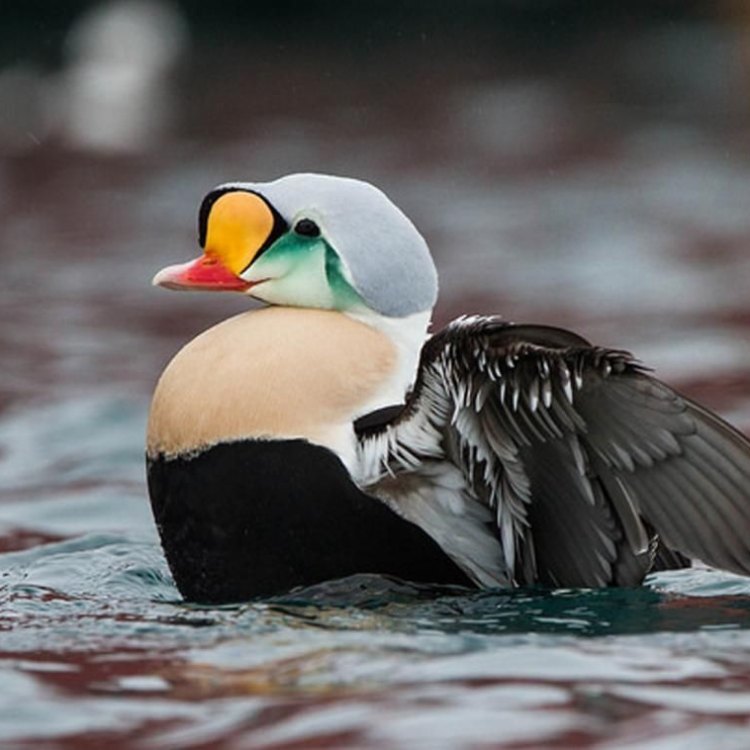
King Eider
- Adult Size: Medium-sized
- Average Lifespan: 10-15 years
- Reproduction: Monogamous
- Reproductive Behavior: Nests on the ground
- Sound or Call: Males produce a variety of calls during courtship displays
- Migration Pattern: Migratory, traveling long distances between breeding and wintering grounds
- Social Groups: Usually found in flocks during migration and winter season
- Behavior: Active diving duck, often feeds by diving underwater
- Threats: Habitat loss, oil spills, pollution, hunting
- Conservation Status: Least Concern
- Impact on Ecosystem: Important predator in the Arctic food chain
- Human Use: Hunted for sport and food
- Distinctive Features: Male has a striking plumage with bright colors
- Interesting Facts: King Eiders are known for their courtship displays and unique vocalizations
- Predator: Arctic fox, Polar bear, and Glaucous gulls
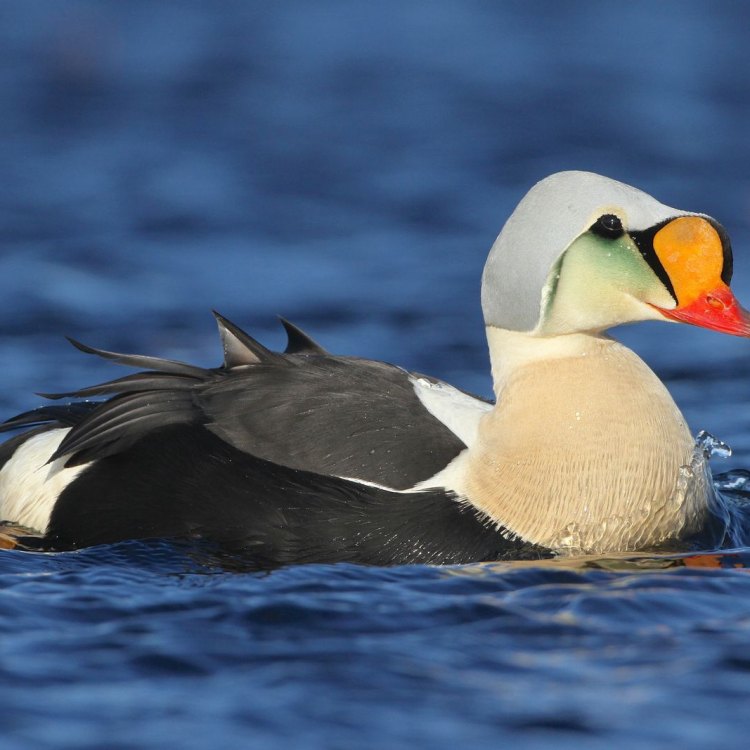
Somateria spectabilis
The Magnificent King Eider: Celebrating the Unique Features and Importance of this Arctic Duck
Nestled among the icy Arctic waters, there is a majestic bird that captivates the hearts of birdwatchers and scientists alike. With its striking plumage and unique vocalizations, the King Eider is a true wonder of nature. Not only is it a beautiful bird, but it also plays a crucial role in the Arctic ecosystem. In this article, we will take a closer look at the distinctive features, behavior, and importance of the King Eider PeaceOfAnimals.Com.The King Eider, also known by its scientific name Somateria spectabilis, belongs to the family of diving ducks and is native to the Northern Hemisphere. As its name suggests, it is the largest of the eider ducks, with males reaching an adult size of 22 to 27 inches and weighing between 3.5 to 5 pounds. Females are slightly smaller, measuring between 20 and 24 inches and weighing 2.2 to 3.5 pounds. Despite their size, King Eiders are considered medium-sized ducks, making them slightly smaller than mallards and wood ducks.
These magnificent ducks have an average lifespan of 10-15 years. However, some King Eiders have been recorded to live up to 20 years in captivity Kishu. In the wild, their lifespan may be shorter due to various threats, including habitat loss, oil spills, pollution, and hunting.
One of the most fascinating aspects of the King Eider is their reproductive behavior. These ducks are monogamous, meaning they form a lifelong pair bond with one mate. They typically start breeding between the ages of 2-3 years and continue to mate with the same partner every breeding season. This strong bond is essential for their mating success, as they rely on each other for protection and to raise their offspring.
During the breeding season, which occurs from May to July, King Eiders nest on the ground, usually near bodies of water. The female constructs the nest, which is a shallow depression lined with grass, feathers, and down. She lays an average of 5-7 eggs and incubates them for about 25-28 days while the male stands guard. Once the eggs hatch, the female leads the ducklings to the water, where they learn to swim and feed on their own. This reproductive behavior is vital to the survival of the species, as it ensures a steady population growth.
While their reproductive behavior may be relatively simple, King Eiders are known for their complex courtship displays. During this time, males produce a variety of unique calls, including a deep growl, a low whistle, and a nasal bray. They also engage in elaborate head-bobbing, wing-flapping, and neck-stretching movements to attract females. These courtship displays not only serve as a means of attracting a mate but also help to reinforce the pair bond between the male and female.
The King Eider is a migratory bird and travels long distances between their breeding grounds in the Arctic and their wintering grounds in the North Atlantic and North Pacific Oceans. This migration pattern is essential for their survival, as it allows the ducks to access different food sources and avoid harsh weather conditions. They usually travel in flocks during their migration and the winter season, providing them with protection and social interactions.
In terms of behavior, the King Eider is an active diving duck. They feed on a variety of marine invertebrates, including shrimp, crabs, mollusks, and worms. They are also known to consume small fish and plant material. They have been recorded to dive up to 30 meters deep and hold their breath for up to 90 seconds while foraging. This behavior makes them well adapted to their aquatic environment and an important predator in the Arctic food chain.
The King Eider may face certain threats, but they are currently listed as "Least Concern" on the IUCN Red List of Threatened Species. This conservation status is a testament to the conservation efforts and regulations put in place to protect these birds. However, they are still vulnerable to habitat loss, oil spills, pollution, and hunting. These threats are usually caused by human activities and can have a significant impact on the King Eider's population.
Human use of the King Eider is not limited to hunting. These birds have been an important source of food for indigenous communities, who have sustainably hunted them for centuries. The King Eider is known for its tender and tasty meat, which is high in protein and fat. However, with the increasing demand for their meat and feathers, conservation efforts have been put in place to ensure sustainable hunting practices.
One of the most distinctive features of the King Eider is its striking plumage. The male has a unique mix of colors on its head, neck, and breast, including a bright yellow-orange bill, white and black head, green nape, and blue-gray breast. The female has a more understated appearance, with a gray-brown head and body. During the breeding season, the male's plumage becomes even more vibrant, making it stand out among other ducks.
Aside from its beautiful appearance, the King Eider is also famous for its interesting facts. Did you know that they are one of the few bird species known to perform non-vocal vocalizations? These unique sounds include a purring noise during courtship and a clicking sound when feeding. They also have the ability to fly at speeds of up to 40 mph, making them one of the fastest flying ducks. These fascinating facts add to the wonder and mystery surrounding the King Eider.
Like all animals, the King Eider also has its share of predators. In the Arctic, their natural predators include the Arctic fox, Polar bear, and Glaucous gulls. These predators target the ducks and their eggs, making it vital for the King Eiders to have a strong pair bond and nesting behaviors for protection.
In conclusion, the King Eider is not just a beautiful and unique bird, but it also plays a crucial role in the Arctic ecosystem. From its distinctive features and behavior to its importance in the food chain, this duck truly is a wonder of nature. While threats such as habitat loss and hunting still exist, conservation efforts and regulations are in place to protect the King Eider and ensure its survival for future generations to admire and appreciate. Its presence reminds us of the beauty and importance of nature and the need to conserve it for generations to come.

Discovering the Majestic King Eider: A Regal Duck of the Arctic
Disclaimer: The content provided is for informational purposes only. We cannot guarantee the accuracy of the information on this page 100%. All information provided here may change without prior notice.




